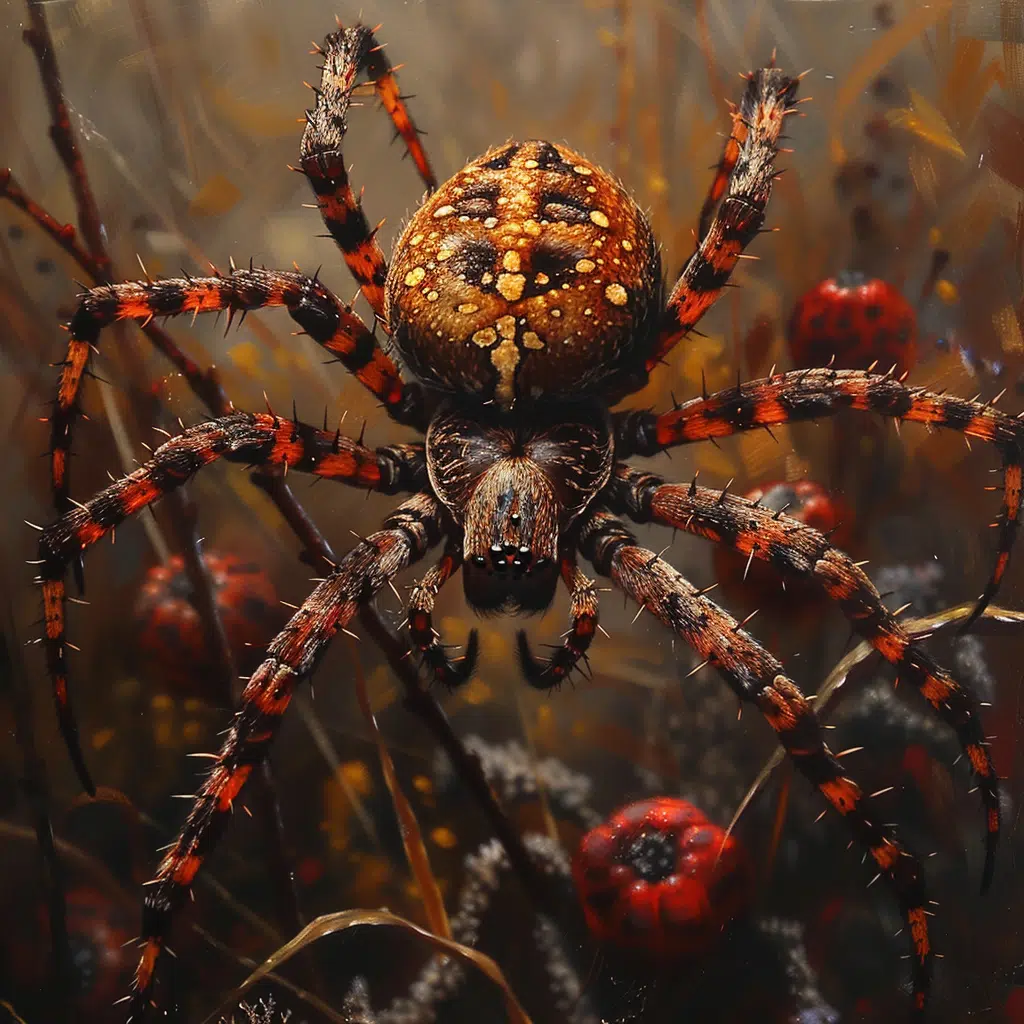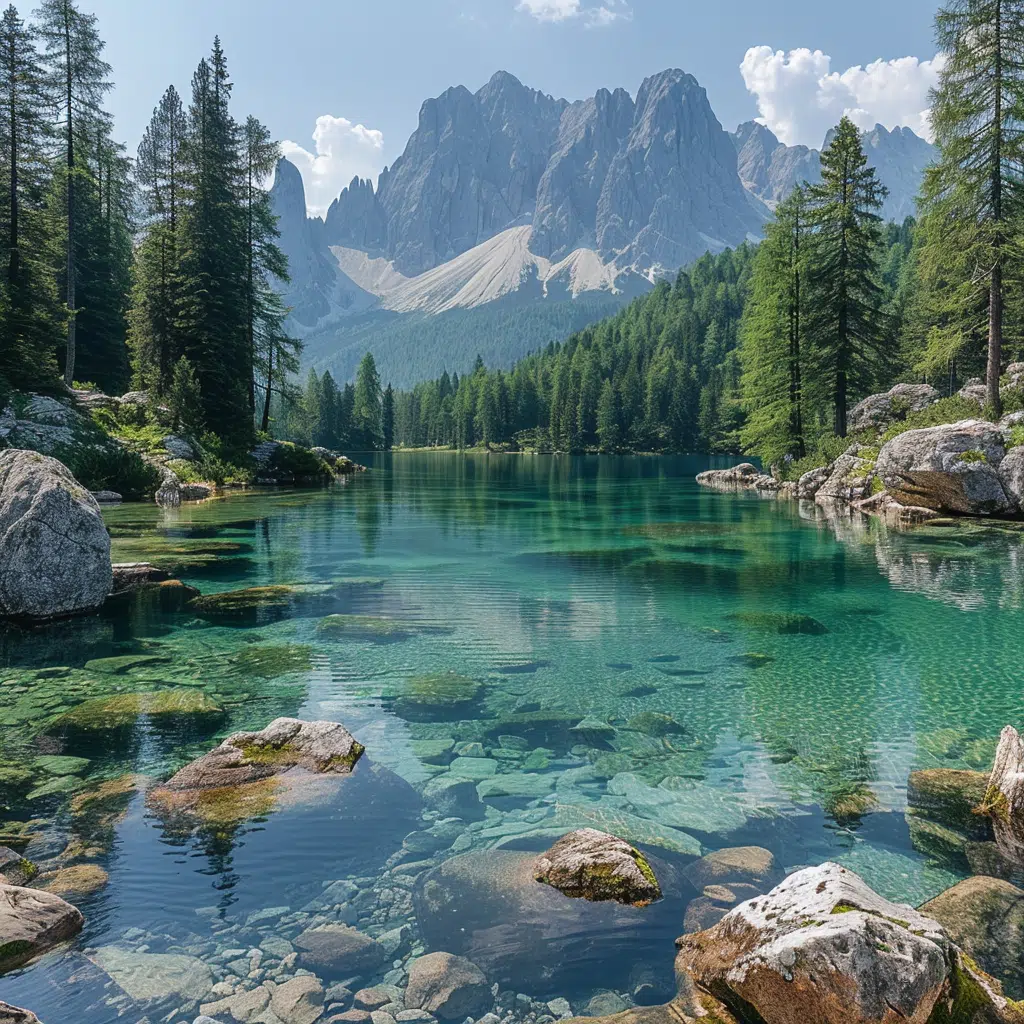The Intriguing World of the Cranberry Bog Spider
In the soft, earthy embrace of cranberry bogs, where the berries burst with autumnal vigor, an unassuming guardian lurks. Meet the cranberry bog spider, a creature whose minuscule size belies its monumental role in this waterlogged world. Unlike the otherworldly sprawl of cobwebs in the dusty corners of an old cabin, the home of the bog spider is a vibrant tapestry of nature that’s equally fascinating and crucial yet often remains undiscovered by the roving eyes of luxury travel enthusiasts.
Bog spiders, defying the traditional image of web-weavers, showcase their might in the complex food web of these wetlands. With bodies less than 35mm in length, they’re like the hidden gears in a grand, ticking clock, ensuring the ecosystem operates smoothly. Onlookers who can appreciate the understated elegance of thriving flora and fauna, akin to the artisan designs at colonial marble And granite studios, understand that every element, including the tiniest spider, contributes to the splendor.
These spiders, particularly wolf spiders adept in hunting, not unlike the cast of Ready to Love in their pursuit for the perfect match, dance across the bog’s surface on silent feet. They command a presence that’s surprisingly powerful if only one knows where to look.
How the Cranberry Bog Spider Sustains the Wetland Ecosystem
It’s a ballet of predation and control, one that the cranberry bog spider performs with aplomb. Serving as natural pest managers, they’re after not the ripe cranberries that might find their way to the tables of high-end restaurants but the insects that threaten the harvest. As these spiders patrol the bogs, they manage populations of cranberry fruitworms and cutworms without the need for synthetic pesticides, a harmonious balance reminiscent of strikes of dialogue in a high-stakes scene of A Good Day To Die hard.
Just like finding the best Amazon black Friday Deals requires a strategy, so does the art of hunting for these eight-legged maestros. By employing their acute senses to detect vibrations and movements, akin to a finely-tuned Coleman camper, they stalk their prey with precision. The spiders, much like accomplished athletes, showcase their hunting prowess that would leave even the likes of Colleen Fotsch nodding in appreciation.
In the realm of sustainability, these diminutive creatures are superstars. Their appetite for insects equates to healthier cranberry yields. It’s a win-win situation, where the balance of nature meets the demands of commerce without compromise.
| Category | Description |
|---|---|
| Common Name | Cranberry Bog Spider |
| Family | Lycosidae (Wolf Spiders) |
| Role in Cranberry Bogs | Natural pest control |
| Predatory Efficiency | Highly effective predator of cranberry pests such as fruit worms and cutworms |
| Danger to Humans | Minimal; non-aggressive, lack potent venom and have small fangs |
| Habitat Specialization | Wetland habitats, specifically cranberry bogs |
| Varieties | Several genera with diverse sizes and behaviors |
| Body Size | Typically 10-35 mm in body length (excluding legs) |
| Eye Arrangement | Eight eyes in three rows |
| Unique Species | Bog Sun-jumper Spider (Heliophanus dampfi) |
| Bog Sun-jumper Traits | |
| – Black body, brown legs, lime green palps | |
| Conservation Status | Not specified; certain specialized species like the Bog Sun-jumper may be of conservation concern |
| Observation Period | Not specified; potential pest control role likely observed during growing season |
Ecological Benefits Beyond Insect Control
But the cranberry bog spider is no one-trick pony. The spider’s authority extends beyond insect regulation, playing a part in orchestrating the bog’s overall wellbeing. Decomposition, that process that doesn’t get much limelight, much like the unsung grips on a film set, benefits massively from these spiders’ activities. They’re the backstage crew ensuring the show goes on without a hitch — a show of nutrient cycling and soil health.
These critters are living proof that size isn’t a factor when it comes to ecological impact. Their presence is a lynchpin, similar to how Lou Ferrigno’s height made an immutable impact on the scene for larger-than-life superheroes. Just as the green palps of the rare Bog Sun-jumper Spider add a dash of color to its environment, the cranberry bog spiders add a layer of resilience to their habitat.
Cranberry Bogs: A Battleground for Conservation Efforts
Amidst the verdant expanses of wetlands, conservationists are waging a war not with weapons, but with wits and willpower. The conservation of cranberry bogs and their spider denizens is tinged with urgency, much like the scramble for Costco Universal studios Tickets during peak holiday season. As environmental shifts continue to challenge these habitats, the communities that rely on them and the spiders that maintain them face an unknown future.
Yet, these efforts aren’t a somber battle; they’re a symphony of initiatives filled with the potential for positive outcomes. From local farmers incorporating eco-friendly practices to research institutions mapping out new strategies, the bog is a microcosm of cooperation that holds lessons for broader conservation work, pulling together various stakeholders like an assemble cast that brings depth to any narrative.
Spotlight on Pioneering Research and Innovative Conservation Strategies
Diving into the world of research and innovation can be as exhilarating as uncovering hidden troves in the archives of history. Groundbreaking studies shine a light on the cranberry bog spider in ways that not only inform but also inspire action. Scientists and ecologists are getting creative, developing strategies, and implementing solutions that are nothing short of cutting-edge, propelling conservation efforts into the future with the force of a Hollywood blockbuster.
It’s the leap from conventional wisdom to innovative practice, much like swapping a traditional tent for a sleek, efficient coleman camper. These strategies are customized for optimum results, drawing from an understanding of ecological dynamics that’s rooted in data and sharpened by real-world application.
Engaging with the Spider: Education and Awareness Campaigns
Awareness campaigns about the cranberry bog spider have the narrative flair of a gripping novel. By spinning tales that captivate and educate, these programs aim to shift perceptions and garner support. The success of such campaigns is measured not in ticket sales or ephemeral engagements but in lasting change — a state where humans and spiders exist in a mutually beneficial coexistence.
From vividly presented workshops to engaging online platforms, the story of the cranberry bog spider is reaching audiences far and wide, equipping them with the knowledge to act. It’s storytelling with a purpose, where each outreach effort acts as an invitation to participate in a larger, shared journey of ecological stewardship.
Future Prospects: The Cranberry Bog Spider and Wetland Preservation
As we cast our gaze to the horizon, the prospects for both the cranberry bog spider and the wetlands they inhabit hang in a delicate balance. Changes in climate, land use, and biodiversity can be formidable obstacles, but they also present opportunities for innovation and adaptation. Forward-thinking research and conscientious conservation hold the keys to unlocking a sustainable future for these integral components of our world’s tapestry.
The journey isn’t just about safeguarding a species; it’s about cherishing an entire ecosystem that enriches our landscapes and our lives. With each strategy and study, we inch closer to ensuring the cranberry bog spider continues to thrive, spinning its web of life that keeps the gears of nature turning smoothly for generations to come.
Innovative Wrap-Up
Drawing these threads together, it becomes clear that the cranberry bog spider is far more than an ecological guardian; it is the living heartbeat of the cranberry bogs. Through concerted research, conservation, and education, the narrative of this spider weaves an inspiring story of ecological resilience and sustainability. A tale not of fear or discomfort but of admiration and respect for one of nature’s most efficient and undervalued protectors. As you next indulge in the luxury of nature’s bounty, spare a thought for the silent sentinel of the cranberry bogs — the magnificent spider that stands guard over one of nature’s most lush and vital landscapes.
The Intriguing World of the Cranberry Bog Spider
A Tiny Hero in a Sprawling Web
Who would’ve guessed that a creature no bigger than a nickel could stand as tall in its own world as Lou Ferrigno does in ours? The cranberry bog spider may not match Lou Ferrigno ‘s height, but it’s undoubtedly one of the mightiest defenders of its marshy domain. These little arachnids come with a big responsibility: maintaining the ecological balance of cranberry bogs across North America. Just as the diverse cast Of Ready To Love navigates the complexities of romance, these spiders weave their way through the intricacies of their ecosystem, forming an essential piece of the cranberry bog’s living puzzle.
Oh, and talk about a social network – these spiders have their own version, connecting plants and insects in a web of life more intricate than the most convoluted of soap operas. Each bog spider can work on a web nearly two feet wide – that’s like throwing a dinner party for the bugs of the bog, only to find out you’re on the menu!
A Not-So-Itsie-Bitsie Impact
While their tiny eight-legged dances might seem inconsequential, the cranberry bog spider’s role could be headlined as “the little spider that could.” As guardians of the grove, they leap into action like arachnid Avengers, preying on insects that threaten to overrun the bogs and harm the cranberry crops. It’s as if each of these minuscule marvels believes that with great power, comes great responsibility. And let me tell you, they stick to that motto as if it were a line of silk attached to the backs of their spidey-butts.
Forget about spraying harmful pesticides; these spiders have the pest control game in their natural programming. Their presence is a boon for the eco-conscious farmer and a bane for the pesky critters that would make a meal of the precious cranberries. And while we’re spinning yarns, these spiders are literally spinning life-saving silk — talk about multitasking!
To sum it up, the cranberry bog spider is a mighty force in a miniscule package, proving that sometimes the most profound impacts come from the places you’d least expect. So, the next time you’re sipping on a cranberry juice, tip your hat to the tiny eco guardians that played a part in bringing that tangy goodness to your table.
Are there spiders in cranberry bogs?
Yep, cranberry bogs often host wolf spiders who help keep pesky insects at bay, chowing down on critters that could otherwise damage the berries.
Are bog spiders venomous?
Bog spiders aren’t looking to harm humans – they lack strong venom and their tiny fangs typically can’t even break our skin.
What is a bog spider?
A bog spider is simply a spider that’s made its home in wetland areas. They’re peaceful critters focusing on catching smaller insects in their damp, soggy environments.
How big are cranberry wolf spiders?
Cranberry wolf spiders vary in size, but they generally range from less than 10 mm to about 35 mm in body length. That doesn’t count their legs, though!
Are wolf spiders aggressive?
Wolf spiders aren’t the type to pick a fight; they’re pretty chill and tend to steer clear of humans, preferring to hunt down insects instead.
How big is a bog spider?
Bog spiders can differ in size, but they’re mainly known for being on the smaller end of the scale, just like other spiders that thrive in similar habitats.
What is the number 1 deadliest spider in the world?
The title of number 1 deadliest spider in the world often goes to the Brazilian wandering spider, due to its potent venom that can be dangerous to humans.
What is world’s largest spider?
The world’s largest spider by leg span is the giant huntsman spider, with a leg span reaching up to 12 inches – that’s about the size of a dinner plate!
What is the rarest spider in the world?
One of the rarest spiders is the Bog Sun-jumper Spider, a tiny critter only found in a few raised bogs in Britain – it’s so rare it’s almost like a little eight-legged treasure.
What is a joker spider?
A joker spider isn’t your everyday arachnid – it’s an informal name given to a particular spider with a pattern resembling the Joker’s smile, found in the rainforests of Iran.
Are wolf spiders in cranberry bogs?
Indeed, wolf spiders enjoy the ambiance of cranberry bogs, where they hunt for insects and contribute to managing the pest population.
What is a banana spider?
A banana spider can refer to a few different spiders but commonly points to the golden silk orb-weaver, known for its impressive webs and vibrant yellow coloration.
How big is a werewolf spider?
Werewolf spiders aren’t a thing – might be mixing up with wolf spiders or the stuff of legends and full moons. Either way, nothing to worry about unless you’re a tiny insect.
Will wolf spiders bother you?
Wolf spiders typically won’t bother you. They’re more into creeping around quietly, catching their insect prey rather than messing with people.
Are wolf spiders rare?
Wolf spiders aren’t exactly a collector’s item – they’re pretty common and can be found in many places all over the world.
Do cranberry farms have spiders?
Cranberry farms are like all-you-can-eat buffets for spiders who come for the insect pests and often stay for the beautiful, boggy ambiance.
What animals live in cranberry bogs?
From chirpy birds to frogs, a slew of critters call cranberry bogs home, some of which help manage pests, similar to the spiders that patrol the waters.
Are there spiders in wetlands?
Wetlands are like a bustling hub for spiders! With plenty of water and insects, they’re a spider’s dream home.
Do cranberry bogs have snakes?
While cranberry bogs might have the odd snake or two, they’re more of a rare find than the norm, as snakes usually prefer drier spots to slither around in.


























